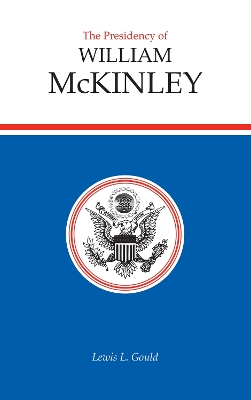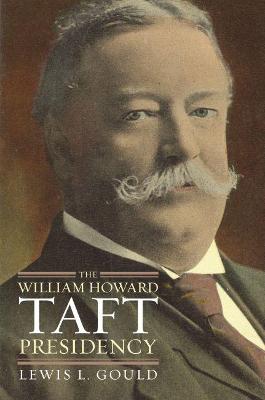American Presidency
3 total works
While this volume touches on many aspects of McKinley's leadership, the core of it relates to the coming of the Spanish-American War, the president's conduct of the war itself, and the emergence of an American empire from 1898 to 1900. According to Gould, the Spanish-American War was not the result presidential weakness or of cowardice before public hysteria. McKinley sought to persuade Spain to relinquish Cuba peacefully, turning to war only when it became apparent that Madrid would never acquiesce.
During the war, McKinley effectively directed the American military effort and the diplomacy that brought territorial acquisitions and peace. The process of making peace with Spain--involving, as it did, American annexation of the Philippines--and of securing the ratification of the resulting treaty in the Senate underscored McKinley's expansive view of presidential power. He functioned as chief diplomat, from the sending of senators on the peace commission to the personal supervision of the terms of the negotiation. At home he made tours of the West and South in 1898 to lead popular opinion to his position as no president had done before him. For the Senate he evidenced a readiness to dispense patronage, woo votes with personal persuasion, and marshal the resources of the political system behind his treaty.
Later episodes in McKinley's administration support Gould's thesis. In administering Puerto Rico and Cuba and in suppressing an insurrection in the Philippines, McKinley relied further on the war power and continued to shape affairs from the White House. He sent troops to china during the Boxer Rebellion in 1900 without congressional authorization, governed the new possessions through presidential commissions, and allowed Capitol Hill only a subsidiary role in the process. By 1901 the nation had an empire and a president whose manner and bearing anticipated the imperial executives of six decades later.
Gould does not argue that McKinley was a great president. He maintains, instead, that what McKinley contributed to the office, the examples he offered and the precedents he set make him an important figure in the emergence of the modern presidency in this century.
Long considered the standard work on its subject, Gould's book is a trusted source that newcomers to Roosevelt's years in the White House and experts in the field could consult with confidence in its research and historical judgments. It has also become an essential adoption for courses on the era, effectively engaging undergraduates and graduate students who have praised the author for his clarity and evenhandedness. Responding to frequent suggestions that the book be brought up-to-date to incorporate the excellent studies of Roosevelt's presidency that have appeared since 1991, Gould has provided a new edition that he believes "will reintroduce a new generation of readers to the fun and importance of an ebullient, lively chief executive."
In this revised and expanded edition, Gould has built on the sterling qualities of the first edition and added new information and analysis based on continuing research and a command of the literature on Theodore Roosevelt's presidency published during the last two decades. He has tightened the prose and added numerous references to the latest scholarship on this most engaging of presidents. Interested readers will find new discussions of the origins of Roosevelt's creation of the Tongass Forest in Alaska, his treatment of a dissenting federal employee named Rebecca Taylor who took her grievance to the Supreme Court, the recent controversy over Roosevelt's relationship with Japan, the dispute over whether the president issued a warning to Germany about Venezuela in 1902-1903, and the important role of a little-known conservative senator named Winthrop Murray Crane.
With these and other changes, the updated version of Gould's text provides an even more compelling narrative that broadens the already fascinating story of Roosevelt in power with new insights and perceptive conclusions.


